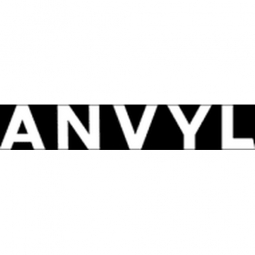Download PDF
Native's Eco-Friendly Personal Care Brand Achieves Supply Chain Efficiency with Anvyl
Technology Category
- Functional Applications - Enterprise Resource Planning Systems (ERP)
- Functional Applications - Remote Monitoring & Control Systems
Applicable Industries
- Consumer Goods
- Retail
Applicable Functions
- Procurement
- Logistics & Transportation
Use Cases
- Supply Chain Visibility
- Inventory Management
- Predictive Replenishment
Services
- System Integration
- Software Design & Engineering Services
The Challenge
Native, an eco-friendly personal care brand based in San Francisco and a P&G brand, faced several challenges in aligning their supply chain team. They needed to manage production timelines effectively, launch an eco-friendly line of packaging, and introduce new product categories. The complexity of these tasks required a streamlined approach to ensure that all stakeholders were on the same page and that the supply chain operations were efficient and transparent.
About The Customer
Native is an eco-friendly personal care brand based in San Francisco, California. As a brand under the Procter & Gamble (P&G) umbrella, Native focuses on providing sustainable and environmentally friendly personal care products. The company has a team of eight stakeholders across Native and P&G, working collaboratively to achieve their goals. Native's commitment to sustainability and innovation drives their efforts to align their supply chain, manage production timelines, and launch new product categories and eco-friendly packaging solutions.
The Solution
To address these challenges, Native implemented Anvyl, a supply chain management platform. Anvyl provided Native with production visibility by digitizing purchase orders (POs), streamlining communication, integrating with their ERP system, and tracking logistics. This comprehensive solution allowed Native to manage their supply chain more effectively and ensure that all stakeholders had access to real-time information. Additionally, Anvyl's platform enabled Native to source eco-friendly packaging materials, automate milestone updates, and significantly increase the number of managed SKUs and monthly active managed orders. This automation and increased visibility helped Native achieve their goals of launching new product categories and eco-friendly packaging while maintaining efficient production timelines.
Operational Impact
Quantitative Benefit
Related Case Studies.
.png)
Case Study
Improving Vending Machine Profitability with the Internet of Things (IoT)
The vending industry is undergoing a sea change, taking advantage of new technologies to go beyond just delivering snacks to creating a new retail location. Intelligent vending machines can be found in many public locations as well as company facilities, selling different types of goods and services, including even computer accessories, gold bars, tickets, and office supplies. With increasing sophistication, they may also provide time- and location-based data pertaining to sales, inventory, and customer preferences. But at the end of the day, vending machine operators know greater profitability is driven by higher sales and lower operating costs.

Case Study
Improving Production Line Efficiency with Ethernet Micro RTU Controller
Moxa was asked to provide a connectivity solution for one of the world's leading cosmetics companies. This multinational corporation, with retail presence in 130 countries, 23 global braches, and over 66,000 employees, sought to improve the efficiency of their production process by migrating from manual monitoring to an automatic productivity monitoring system. The production line was being monitored by ABB Real-TPI, a factory information system that offers data collection and analysis to improve plant efficiency. Due to software limitations, the customer needed an OPC server and a corresponding I/O solution to collect data from additional sensor devices for the Real-TPI system. The goal is to enable the factory information system to more thoroughly collect data from every corner of the production line. This will improve its ability to measure Overall Equipment Effectiveness (OEE) and translate into increased production efficiencies. System Requirements • Instant status updates while still consuming minimal bandwidth to relieve strain on limited factory networks • Interoperable with ABB Real-TPI • Small form factor appropriate for deployment where space is scarce • Remote software management and configuration to simplify operations

Case Study
How Sirqul’s IoT Platform is Crafting Carrefour’s New In-Store Experiences
Carrefour Taiwan’s goal is to be completely digital by end of 2018. Out-dated manual methods for analysis and assumptions limited Carrefour’s ability to change the customer experience and were void of real-time decision-making capabilities. Rather than relying solely on sales data, assumptions, and disparate systems, Carrefour Taiwan’s CEO led an initiative to find a connected IoT solution that could give the team the ability to make real-time changes and more informed decisions. Prior to implementing, Carrefour struggled to address their conversion rates and did not have the proper insights into the customer decision-making process nor how to make an immediate impact without losing customer confidence.

Case Study
Digital Retail Security Solutions
Sennco wanted to help its retail customers increase sales and profits by developing an innovative alarm system as opposed to conventional connected alarms that are permanently tethered to display products. These traditional security systems were cumbersome and intrusive to the customer shopping experience. Additionally, they provided no useful data or analytics.







